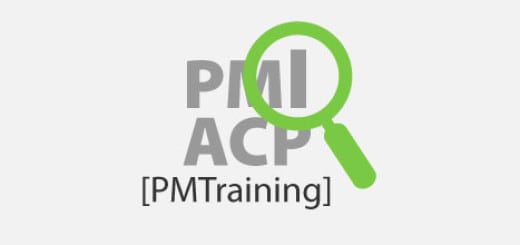PMI-ACP Study Notes: The Agile Team

[PMI-ACP® Exam Study Notes] The Agile team differs greatly from traditional project teams in terms of organization, management and decision making. This is an important topic for the PMI-ACP® Exam. The characteristics of the Agile team is listed below.
Article Highlights
Self-organization
- Self-organizing teams are the foundation for Agile project management
- traditional project management: top-down approach, follow instructions/planning from managers, little or no input from the front-line staff
- Agile project management: the problem is handed down to the project team to determine what and how to do
- in Agile projects, the project manager/Coach/ScrumMaster are there to facilitate the team in times of dysfunction, e.g. conflicts are necessary for high performing teams, if the team culture is too reluctant to enter into conflicts, the Coach should be the one to introduce some conflicts
- Self organization includes: team formation, work allocation (members are encouraged to take up works beyond their expertise), self management, self correction and determining how to work is considered “done”
- all members of the team are collectively responsible for the success (or failure) of the project, everyone is responsible for everything
- Agile projects work best when the team members are seasoned, self-directed and highly motivated
- team members should be involved in the selection and interviewing of new members
Open and Transparent
- contribution and progress of individual members should be visible to all the team
- work does not belong to a single member but the whole team
Small Team Size
- in the book Succeeding with Agile by Mike Cohn, it is suggested that the team should be able to be fed with “a couple of pizzas”
- for larger projects, the team should be sub-divided (break down the project into sub-projects)
- for Scrum teams, the optimal team size is 7 ± 2
Colocation
- the ideal co-located team should be all in the same room with all barriers (e.g. partitions) removed – to facilitate communication and collaboration while minimize distraction
- team members as well as the customer should sit around a square/circular table facing each other
- members can hear and see each other to facilitate communication
- colocation can avoid the formation of silos (expert groups focusing on single aspects of the project, communication across different groups is very challenging)
- make use of information radiators (e.g. charts/backlog lists/user stories posted on the walls) and whiteboards
- if physical colocation is not feasible, virtual colocation by making use of instant messengers/video conferencing software is highly encouraged
Agile Tooling
- use of Agile tooling (a class of tools, technologies and practices) should be made to help building bonding and sense of belonging by encouraging communication, participation and information sharing
- high-tech Agile tooling: instant messengers, video conferencing, online Agile project management tools
- low-tech Agile tooling: recreational space, daily stand-up meetings, team building activities
Empowered Team
- the Agile team is given the power to self-direct and self-organize by making and implementing decisions, including: work priority, time frames, etc.
- the team may optionally given the power to add value to the customer and choose team members
- an important aspect of the empowered team is to have the customer/product owner co-locating with the team
- “the best person to make the decision is the one whose hands are actually doing the work”
- factors needed: organizational buy-in, alignment with corporate goals, shared vision, clear communication, customer involvement and team accountability
Ground Rules
- ground rules are unwritten rules about the expectation of the project team members
- including: work time, culture, language, rituals, etc.
Summary
This piece of PMI-ACP® Exam study notes describes the characteristics of an Agile team which include self-organization, colocation and empowerment. The Agile team is central to the success of Agile project management.
Most Popular PMI-ACP Certification Articles
- Top 10 Tips to Prepare for the exam (I got all Proficient in my exam)
- How to Get 21 Contact Hours?
- Over 600+ FREE Quality Mock Exam / Practice Questions





 Hi, my name is Edward Chung, PMP, PMI-ACP®, ITIL® Foundation. Like most of us, I am a working professional pursuing career advancements through Certifications. As I am having a full-time job and a family with 3 kids, I need to pursue professional certifications in the most effective way (i.e. with the least amount of time). I share my exam tips here in the hope of helping fellow Certification aspirants!
Hi, my name is Edward Chung, PMP, PMI-ACP®, ITIL® Foundation. Like most of us, I am a working professional pursuing career advancements through Certifications. As I am having a full-time job and a family with 3 kids, I need to pursue professional certifications in the most effective way (i.e. with the least amount of time). I share my exam tips here in the hope of helping fellow Certification aspirants!





